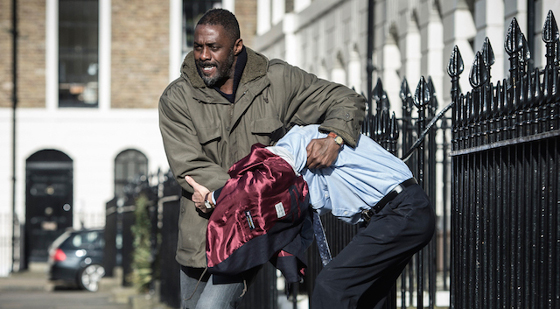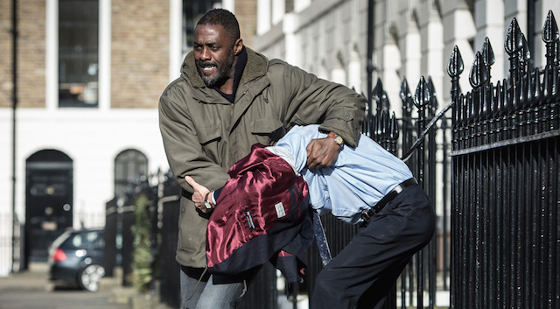James Bond is as synonymous with brands as with sex and car chases. But does advertising in the films go over the top? Nicholas Barber crunches the numbers.
By Nicholas Barber. Full article available here
1 October 2015
There are a few moments in the Bond films which even the most forgiving 007 fans can’t recall without wincing. There’s Pierce Brosnan’s hang-gliding off a glacier in Die Another Day. There’s Roger Moore’s Tarzan impression in Octopussy. And, up there with the worst of them, there’s the Casino Royale scene in which Eva Green asks Daniel Craig if his watch is a Rolex. “Omega,” he replies. “Beautiful,” purrs Green. “Eurgghh,” groans everyone in the cinema.
Product placement is integral to the Bond formula; all those less-than-subtle corporate logos pop up as regularly as dinner suits, megalomaniac villains, and women with double entendres instead of names. But there are times when a Bond movie stops being a Bond movie and starts being an advert: Pierce Brosnan driving a tank through a perfectly framed Perrier lorry in Goldeneye is another shudder-worthy example.
Could it happen again in Spectre, the 24th official film in the series? As ever in the run-up to a Bond movie’s release, we’ve heard as much about its sponsors as its stars. Aston Martin and Land Rover are due to provide our hero’s transport. His phones happen to made by the very company that is distributing the film, Sony. And Belvedere, Bollinger and Heineken have been announced as Bond’s tipples of choice, despite the chorus of complaints when he swapped vodka martinis for beer in Skyfall. On the official 007.com website, there is even a menu devoted to the film’s 12 brand “partners”, leaving us in no doubt as to how central they are to the franchise. But, considering how embarrassing product placement can be, wouldn’t Bond be better off without it?
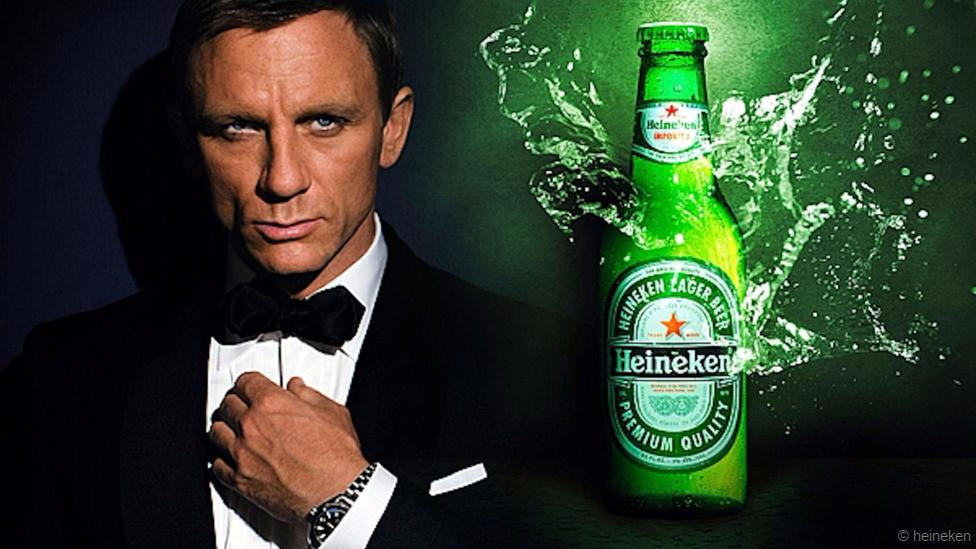
The exact amount is unclear but $45 million has been mentioned as the cost of Bond’s swig of Heineken in Skyfall (Heineken)
Michael Rosser, the news editor at Screen magazine, doesn’t think so. “Money in film is not what it was,” says Rosser. “The home entertainment market is in decline, so there has to be other ways to make money from movies, and product placement is really a big part of that. In an ideal world, sure, you wouldn’t have it. But, realistically, if you want a Bond movie that’s as spectacular as we’ve come to expect, then it can’t be made on goodwill.”
Indeed, Spectre is reported to have a budget of well over $300 million (£198 million), making it the most expensive Bond movie so far – and the film’s marketing is set to cost a similar amount. “If it takes product placement to generate that money,” says Rosser, “then so be it. I’d rather have a two-hour Bond movie with 30 seconds of ads in the middle of it than no Bond movie at all.”
Making a killing
Daniel Craig said as much when he was making Skyfall in 2012. “The simple fact is that, without [product placement], we couldn’t do it,” he commented. “It’s unfortunate but that’s how it is.” And yet Skyfall went onto rake in $1.1 billion at the worldwide box office, against a budget of under $200 million. Surely such a staggeringly lucrative film shouldn’t have to advertise beer and watches to make ends meet.
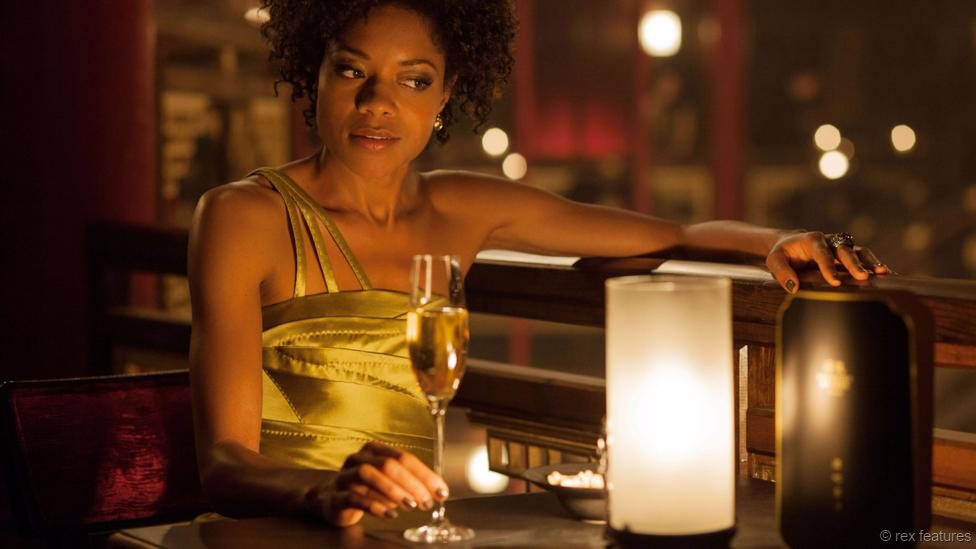
Belvedere, Bollinger and Heineken are now Bond’s tipples of choice, although there were complaints when he swapped vodka martinis for beer in Skyfall (Rex Features)
“That may be true,” says Darryl Collis, a director of one of Britain’s leading product placement agencies, Seesaw Media. “But Skyfall was an anomaly: it made almost as much as the last two Bond films put together. And the question is, would Skyfall have taken that much money if it didn’t have all those advertising partners promoting it?
”There is a lot more to Bond’s product placement deals, says Collis, than a certain car being on screen for a certain number of seconds, and a certain amount of money changing hands. As beneficial as this transaction may be to both parties, it’s what happens beyond the film that really matters. When a brand becomes an official partner in the Bond business, it earns the right to produce limited edition 007 Vodka bottles or watches, to run 007-related competitions and giveaways, and to reference 007 in its print and screen adverts. This cross-promotion is valued by the brands, because it cements their association with Bond’s grown-up glamour, but it’s just as crucial to the film.
‘Shifting perceptions’
“It’s incredibly smart of the film company to do these deals,” says Chris Sice, managing director of Blended Republic, an agency that advises the likes of Johnnie Walker on how to integrate their brands into films and television series, “because they’re getting others to do the marketing on their behalf. Every time there’s an announcement about one of the brand partners, there’s the most extraordinary avalanche of media coverage, and it all raises awareness of the film. Every time they make an advert that mentions Bond, that reminds people that the film is on its way. The brands are paying for the privilege of promoting a Bond movie.”
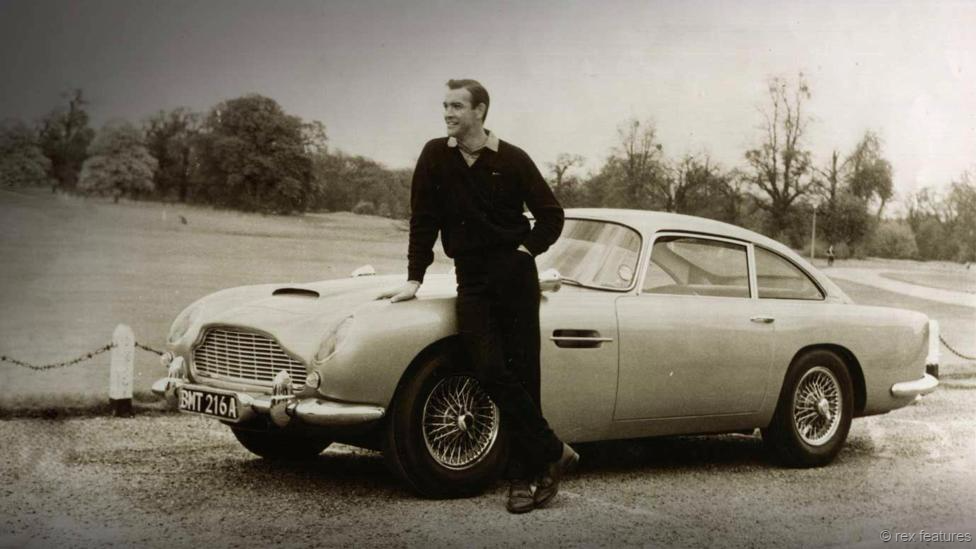
Ian Fleming described in detail all the things Bond uses – which is how he came to be synonymous with brands (Credit: Rex Features)
How much money these brands are paying is rarely confirmed, but astronomical sums are bandied about: $45 million has been cited in relation to Bond’s swig of Heineken in Skyfall. The brewery, you might think, is going to have to sell a lot of beers to recoup that outlay. But Collis believes it’s money well spent.
“Forty-five million sounds like a lot,” he says, “but Bond is a global property. If you break it down into all the different countries that the company would be advertising in, anyway, it doesn’t seem so much. Heineken also knows that people will be watching a Bond film for decades, so it’s not as if they’re paying for a one-off ad. They’re paying to become known as a premium brand in the long term. It’s more about shifting perceptions than shifting products.”
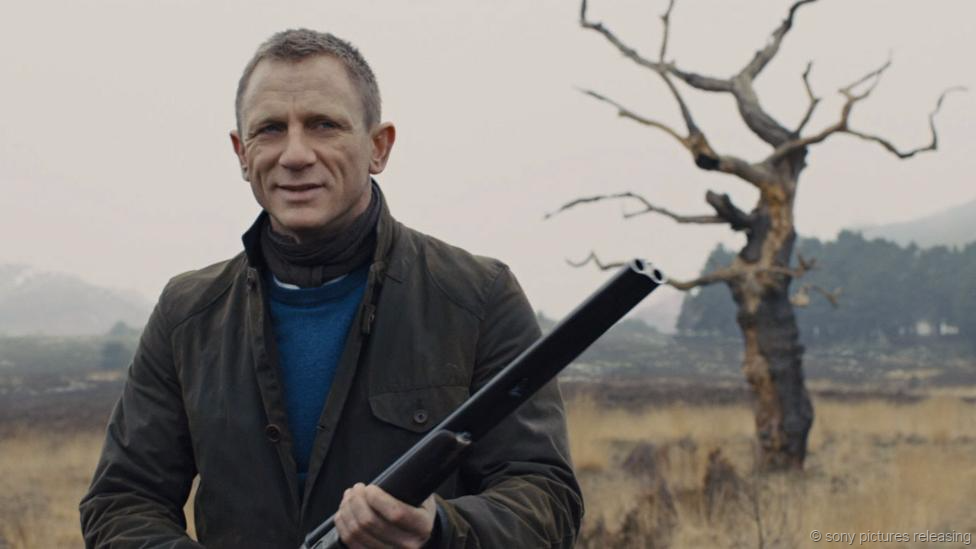
The Barbour jacket the secret agent wore in Skyfall immediately sold out – a phenomenon that has been described as ‘the Bond effect’ (Sony Pictures Releasing)
Brand, James Brand
The reason that Bond movies can shift perceptions is that they occupy a niche which is unlike that of any other blockbuster. However many box office records are broken by the Avengers, Star Wars or Transformers, it’s only 007 who signifies a taste for high-end consumer goods. And it’s all thanks to his creator, Ian Fleming. “Fleming describes in great detail all the things that Bond uses,” the film franchise’s co-producer, Barbara Broccoli, has said, “whether it comes down to a glass of wine, a meal he is eating, a car he is driving, or what suit he is wearing. That’s how Bond became synonymous with quality goods. That notion really started with the books. If you think you may not be alive tomorrow, you might as well have the best of everything.”
It should be noted, perhaps, that Bond’s watch in the books is a Rolex, not an Omega, but even if the brand names change, the character’s eye for luxury is now so well established that a designer suit will always fit into his films more snugly than it will ever fit into a Bourne or Mission: Impossible instalment. And because Bond spends more time drinking and seducing female spies than any other action hero, he can sell a lifestyle to an older, more affluent and more aspirational audience than Spider-Man or Captain America.
“It’s a cliché that Bond is someone who every man wants to be, and every woman wants to be with, but it’s true that in marketing terms, James Bond’s suit means more than Daniel Craig’s suit,” says Collis. “The appetite to drive what he’s driving, to drink what he’s drinking and to wear what he’s wearing is incredible. And I’ve experienced the Bond effect first-hand. At the very end of Skyfall, he picks up an old Barbour jacket in Skyfall House – and that jacket immediately sold out. They were retailing for £400, and soon people were selling them on Ebay for £2,000. I remember it because I bought one myself.”
.




